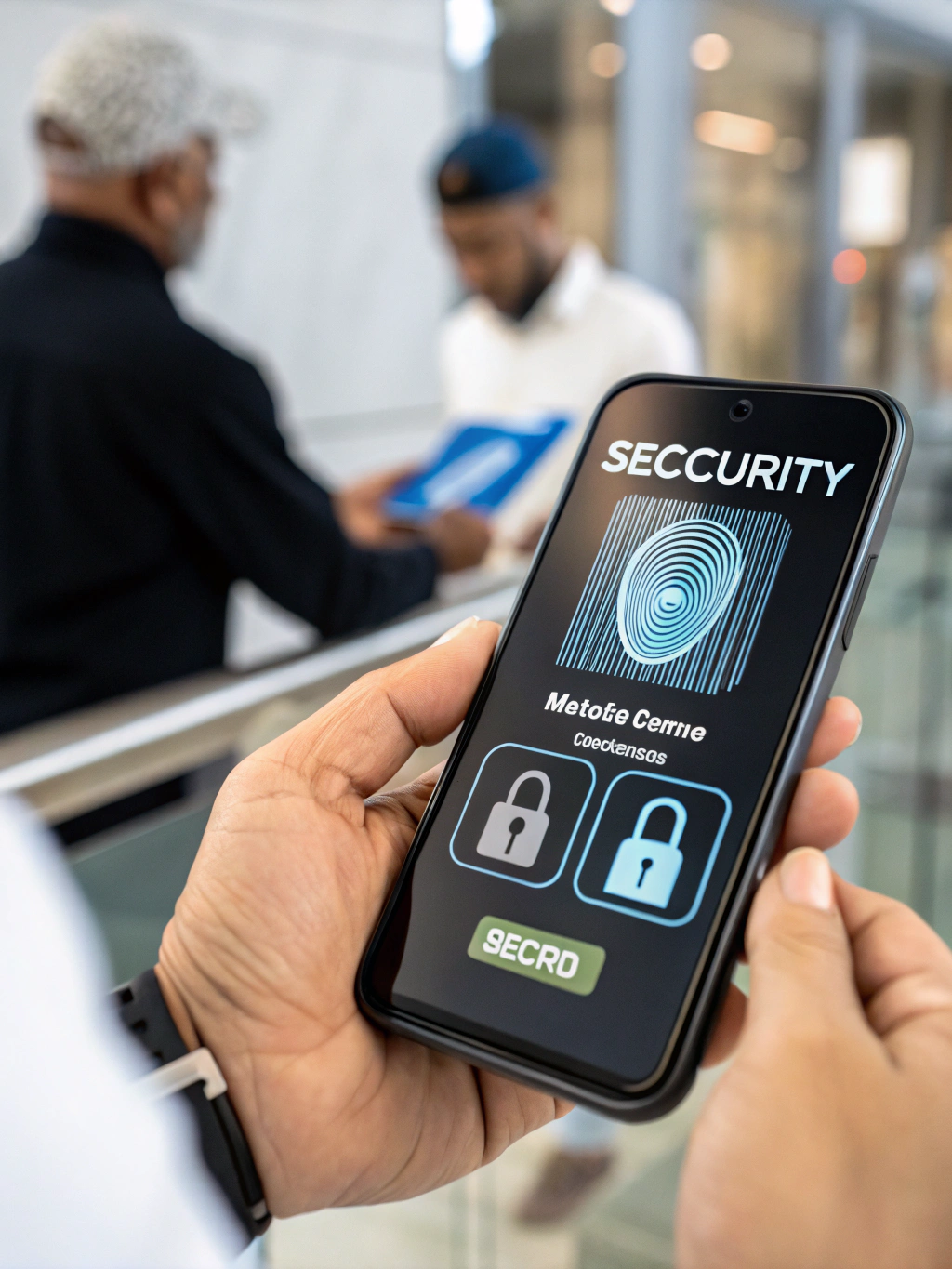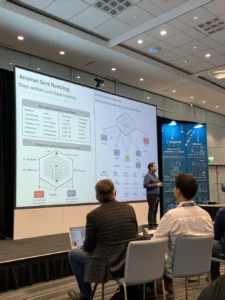The Quantum Threat: How Quantum Computing Could Break Modern Cybersecurity
The Quantum Leap in Threat: Navigating quantum computing cybersecurity risks The future is arriving faster than many realize, and it’s not just about self-driving cars and virtual reality. A silent revolution is underway in the realm of computing: quantum computing. While holding immense promise for breakthroughs in medicine, materials science, and artificial intelligence, this powerful technology also introduces unprecedented vulnerabilities to our current digital infrastructure. One of the most pressing concerns is the escalating threat posed by quantum computing cybersecurity risks. This isn’t a hypothetical future problem; it’s a rapidly approaching reality demanding immediate attention from businesses, governments, and individuals alike. Understanding these risks – and developing robust defenses – is no longer optional; it’s essential for safeguarding data, financial systems, and national security. This article will delve into the quantum threat, explore potential solutions like post quantum cryptography, and discuss the broader implications for a world increasingly reliant on digital security. What Makes Quantum Computing a Cybersecurity Threat? Traditional computers store information as bits, representing 0 or 1. Quantum computers, however, utilize qubits. Qubits leverage quantum mechanical phenomena like superposition and entanglement, allowing them to exist in multiple states simultaneously. This gives quantum computers the potential to perform computations exponentially faster than classical computers for certain types of problems. This speed boost poses a significant challenge to current encryption methods. Many of the cryptographic algorithms that secure our digital world – including RSA and ECC, which underpin secure websites, online banking, and encrypted communications – are vulnerable to attacks from sufficiently powerful quantum computers. The most concerning algorithm is Shor’s algorithm. This algorithm, designed to run on a quantum computer, can efficiently factor large numbers – a task that is practically impossible for classical computers within a reasonable timeframe. Because RSA’s security relies on the difficulty of factoring large numbers, quantum computers represent a direct threat. The implications are staggering. Sensitive data, from financial records and personal medical information to government secrets and intellectual property, could be decrypted. This could lead to widespread financial losses, identity theft, and breaches of national security. Post-Quantum Cryptography: A Shield Against the Quantum Threat The good news is that researchers and cryptographers are actively developing solutions to mitigate these risks. The field of post quantum cryptography (PQC) focuses on developing cryptographic algorithms that are resistant to attacks from both classical and quantum computers. These algorithms are designed to be mathematically robust enough to withstand the computational power of future quantum machines. Several promising PQC algorithm families are currently being explored and standardized by organizations like the National Institute of Standards and Technology (NIST). These include: Lattice-based cryptography: This approach relies on the hardness of problems related to lattices, which are mathematical structures. Lattice-based algorithms are considered robust and efficient. Code-based cryptography: This uses error-correcting codes for encryption, offering strong security guarantees. Multivariate cryptography: Based on the difficulty of solving systems of multivariate polynomial equations. Hash-based cryptography: This builds security on the properties of cryptographic hash functions. NIST announced the first set of PQC standards in July 2022, marking a crucial step toward preparing for the quantum era. The initial standards focus on key encapsulation mechanisms (KEMs) and digital signatures. Further research and standardization are ongoing, and the final selection of algorithms is expected to shape the future of digital security. Beyond Encryption: Broader Implications and Mitigation Strategies The impact of quantum computing extends beyond just encryption. Quantum computers have the potential to break other cryptographic protocols used in various applications, including digital signatures and key exchange mechanisms. Here’s a breakdown of broader concerns and strategies: Application Current Vulnerability PQC Mitigation Other Strategies Secure Websites (HTTPS) RSA, ECC PQC KEMs Hybrid Approaches Digital Signatures RSA, ECC PQC Digital Signatures Certificate Revocation VPNs & Encrypted Communication RSA, ECC PQC KEMs Enhanced Key Management Blockchain Technology ECDSA PQC Digital Signatures Quantum-Resistant Blockchains Financial Transactions RSA, ECC PQC KEMs Multi-Factor Authentication Hybrid Approaches: Combining classical and post quantum algorithms during the transition period can offer an immediate layer of enhanced security, even if one of the algorithms is compromised. Quantum Key Distribution (QKD): While PQC focuses on algorithms, QKD offers a different approach to security. It uses the principles of quantum physics to distribute encryption keys in a way that is inherently secure, as any attempt to eavesdrop on the key exchange would alter the quantum state and be detectable. Proactive Risk Assessment: Businesses and organizations need to proactively assess their exposure to quantum computing risks. This involves identifying critical data and systems, understanding their reliance on vulnerable cryptographic algorithms, and developing a plan for transitioning to PQC. The Role of AI Agents and Automation in Quantum Security The rapid advancement of AI offers a powerful complement to the development and deployment of post quantum cryptography. AI agents can be leveraged to automate key aspects of the transition including algorithm selection, integration, and security testing. Furthermore, AI can assist with threat intelligence by detecting anomalies that might indicate an attempted quantum attack. AI also plays a role in enhanced security measures. AI-powered Intrusion Detection and Prevention Systems (IDPS) can analyze network traffic and system logs to identify suspicious activity that might be indicative of a quantum-based attack. The ability of AI to analyze vast datasets in real-time can provide a crucial early warning system, enabling organizations to respond quickly. Automation is also paramount. Transitioning infrastructure to PQC will be complex and require significant manual effort. AI-driven automation can streamline this process, reducing the risk of errors and accelerating the adoption of new algorithms. Looking Ahead: A Future Secured by Quantum Resilience The advent of quantum computing presents a profound challenge to our existing cybersecurity framework. However, it also provides an unprecedented opportunity to innovate and build more resilient systems. The development and deployment of post quantum cryptography is a critical step in this ongoing evolution. The transition to a quantum-safe world will not be easy, but it is a necessity. Organizations should begin assessing their vulnerabilities and investing in PQC solutions today. Staying informed about the latest advancements in PQC, actively participating in standardization efforts, and embracing automation and AI are crucial steps in ensuring a secure digital future. What are your thoughts on the quantum computing cybersecurity risks? Share your comments and questions below! And be sure to explore more about the latest advancements in cybersecurity by checking out resources on NIST’s Post-Quantum Cryptography Initiative and the NCC Group’s research on quantum security. Keywords: quantum computing, cybersecurity, quantum computing cybersecurity risks, post quantum cryptography, PQC, quantum key distribution, QKD, AI, artificial intelligence, automation, encryption, digital security, threat, risk assessment.
Share this content:














Post Comment